The Kufiya Story
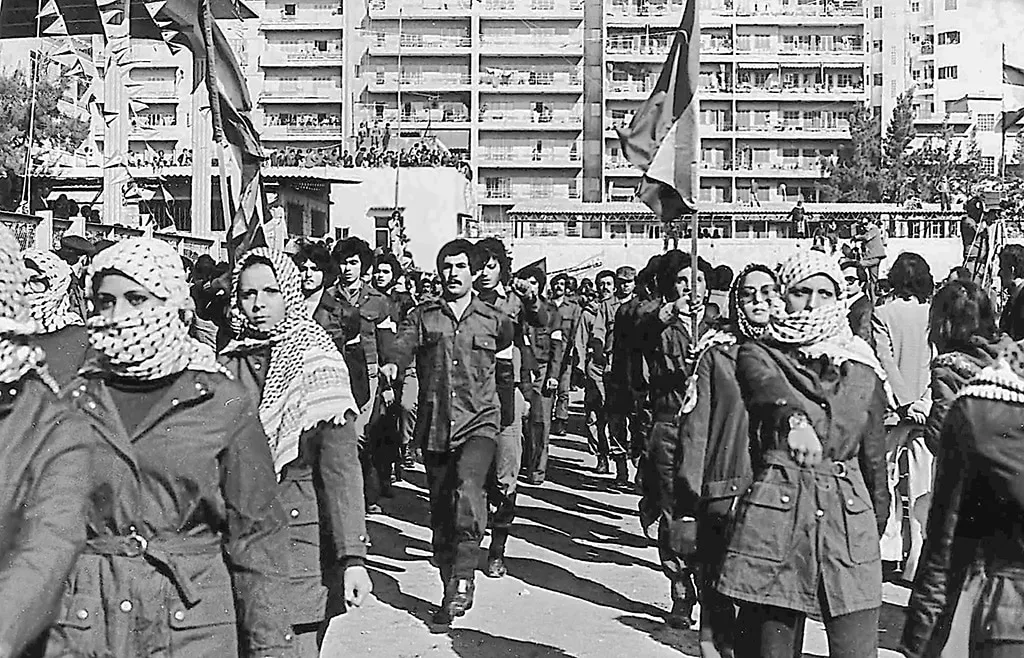
Introduction
Imagine a fabric that carries the whispers of a thousand years, woven with threads that tell the stories of a people’s journey. The Kufiya, whether black, red, or in modern colors, is far more than a simple Bedouin headscarf. This iconic garment, also known as Keffiyeh, Hatta, Ghatra, or Shemagh, has evolved from a practical piece of attire into a potent symbol of identity, resilience, and resistance. With its distinctive checkered pattern, the Kufiya carries a rich and complex history that resonates deeply across the Middle East and beyond.
The Black and White Kufiya: Palestinian Resistance
The Red and White Kufiya: Jordanian Pride and Palestinian Movements

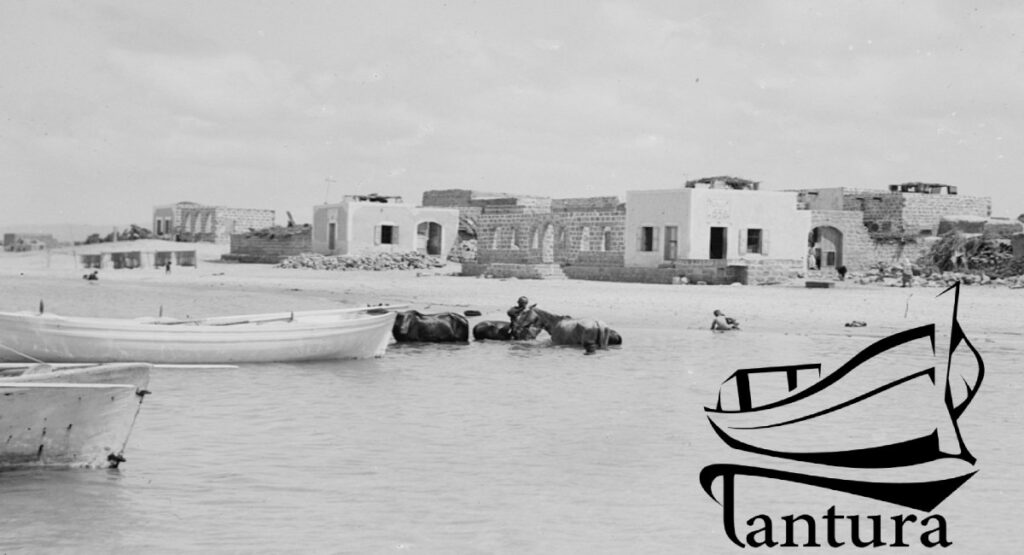
The Story of Al-Tantura and the Kufiya
Nestled 24 km south of Haifa along the Mediterranean coast, Al-Tantura was once a thriving Palestinian village, a symbol of a united community with connection to the land and the sea. Before the Nakba of 1948, this vibrant community cherished its traditions, including the Kufiya, which embodied their steadfast commitment to their identity, their love for the sea, and their dedication to the olive trees that symbolized life and peace.
However, this peaceful existence was tragically disrupted. On May 4th, 1948, after Al-Tantura’s surrender, over 230 residents were massacred in a devastating act of crime, and the remaining inhabitants were forcibly expelled. Survivors of this atrocity have recounted their experiences, which were documented in Teddy Katz’s 1998 thesis and revisited in the 2022 Israeli documentary film Tantura, featuring testimonies from Israeli members of the militias that participated in and witnessed the massacre.
The story of Al-Tantura is not just a reminder of a historical crime; it is a living testament to the enduring Palestinian struggle for justice and recognition. Through initiatives like One Million Kufiya, we carry forward this legacy, preserving the name “Tantura” not only as a reminder of the massacre but also to embody the deeper cultural and historical significance of the village itself, just like many other villages that thrived with culture, work, memories, stories and life before the occupation.
On the other hand, the patterns of the Kufiya are woven with the spirit of Al-Tantura. The bold lines reflect the trade routes that once bridged the village to the north, west, south, and east. The flowing, wavy lines symbolize the olive trees that flourished in its fertile fields, while the checkered design brings to life the fishnets of the village’s fishermen, forever tied to the rhythms of the sea.
This is where the Kufiya found its soul and meaning; in the villages that were homes to travellers, farmers and fishermen, who wove their lives into its fabric during long days and nights. Along the gathering roads, in the olive fields, and by the giving sea, they poured their sweat, blood, love, and warmth into every thread. The Kufiya is more than a scarf; it is a living symbol of unity, heritage, and resilience. Each thread carries a story of courage, and each fold holds the strength of a people who refuse to be erased from history.
When you wear a Kufiya, you are not just wearing a piece of fabric, you are embracing a legacy. You carry with you the spirit of Palestine, honoring its history and sharing its story. It is a bold commitment to stand for resilience, unity, and hope.
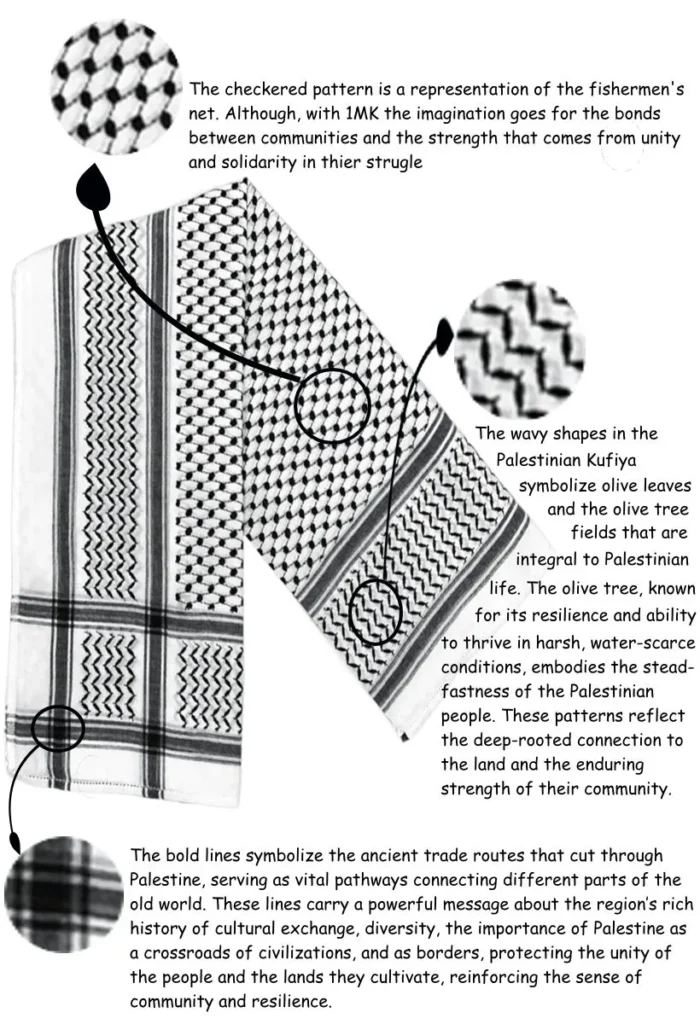
Palestinian Kufiya: A Symbol of Resilience
Now, let’s journey a bit further west, where the Palestinian kufiya tells its own story, rich with meaning and memory. The checkered pattern here is a bit more open, with spaces between the squares, perhaps symbolizing the wide, open fields where olive trees stand tall and proud. These trees are more than just plants—they are the heartbeat of Palestinian culture.
The wavy shapes in the Palestinian kufiya aren’t just decorative; they represent the leaves of the olive tree, a symbol of peace, resilience, and the deep connection to the land. Just like the olive trees that withstand the test of time and weather, the Palestinian people have held onto their roots, staying strong in the face of challenges. Each line on the kufiya is a thread in a larger tapestry of unity and hope, a reminder that even in the toughest of times, the bonds that tie a people to their land and to each other remain unbroken.
Iraqi Kufiya: A Tapestry of Heritage
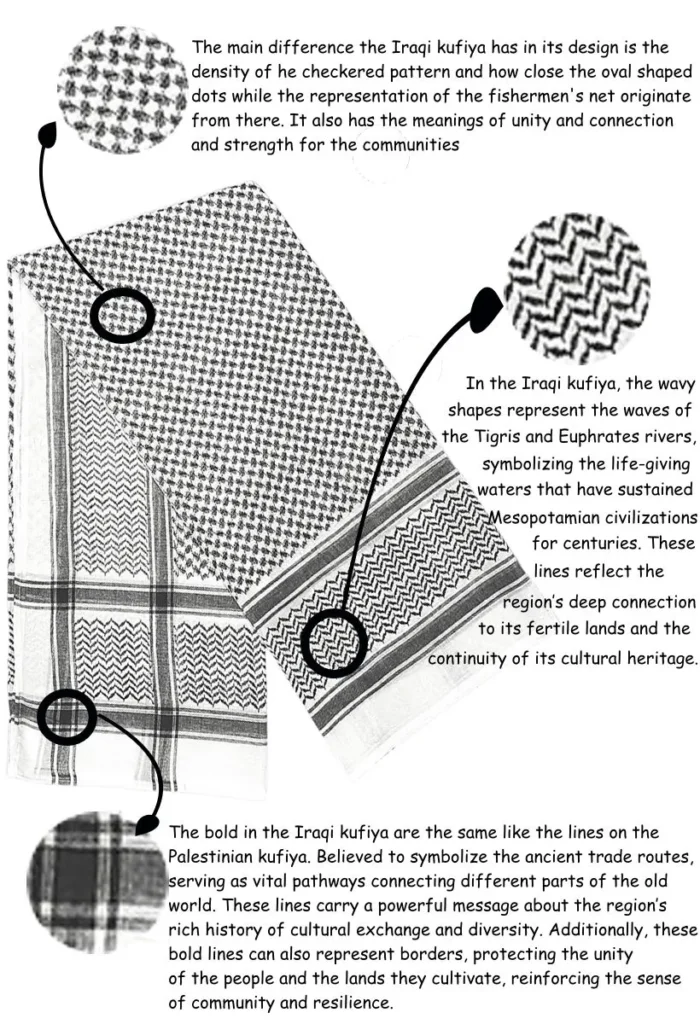
The Kufiya: An International Beacon of Solidarity
The kufiya has evolved into a powerful global symbol of solidarity with Palestine, transcending borders, languages, and cultures. In protests from New York to London to Sydney, the kufiya is a common sight, serving as a visual representation of support for Palestinian rights and the ongoing struggle for self-determination. Its influence extends beyond physical rallies; the kufiya is a digital banner for the Palestinian cause, widely shared across social media platforms, where it continues to inspire and unite people worldwide.
Recently, celebrities like Roger Waters the founder of the legendary Pink Floyd, and world known singer Macklemore, celebrity model Bella Hadid, Basket ball pro Kyrie Irving, and climate activist Greta Thunberg, have been seen wearing the kufiya while the list doesn’t stop at these celebrities, but many more and still growing. The Palestinian Kufiya has been amplifying the message and drawing international attention to the Palestinian cause. This growing wave of support reflects a deepening global awareness and commitment to justice, making the kufiya not just a symbol of resistance, but a beacon of hope and unity in the fight for freedom of Palestine, and the right to freedom of expression.
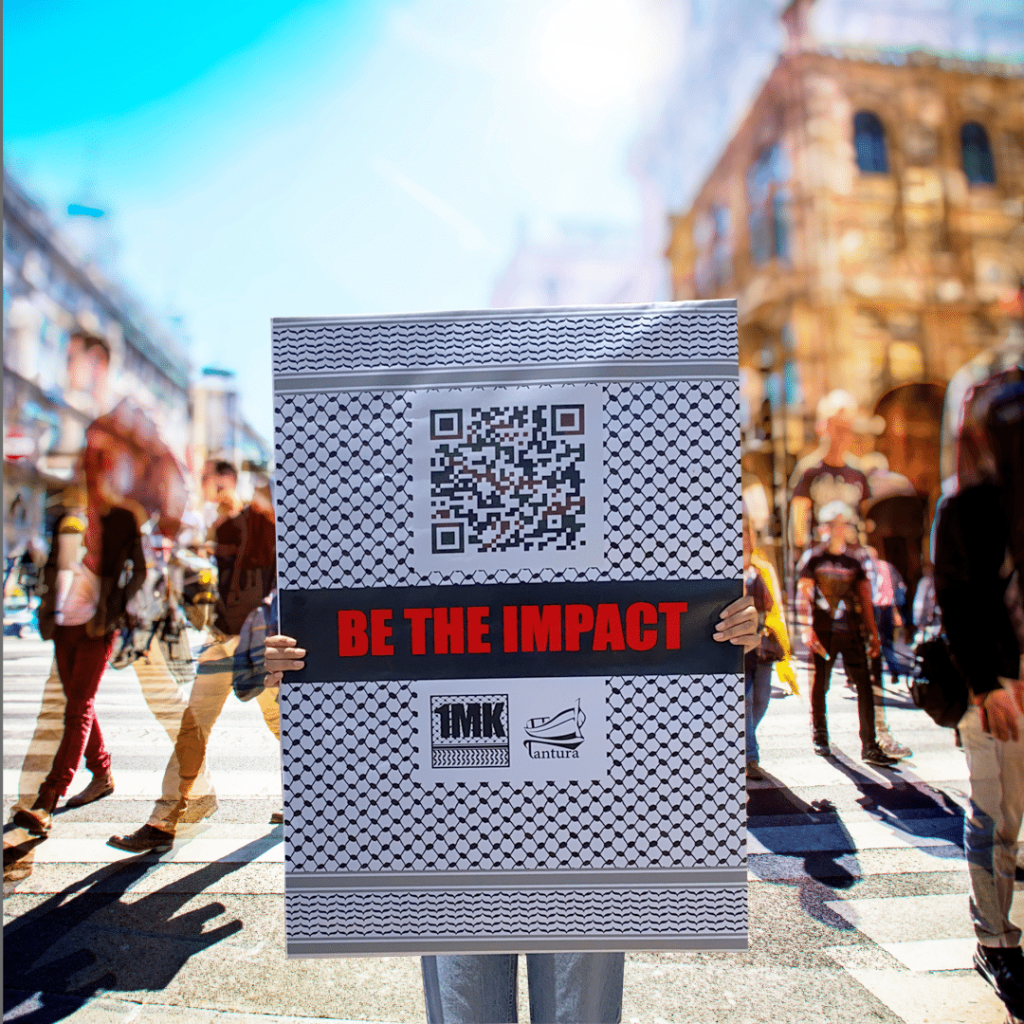
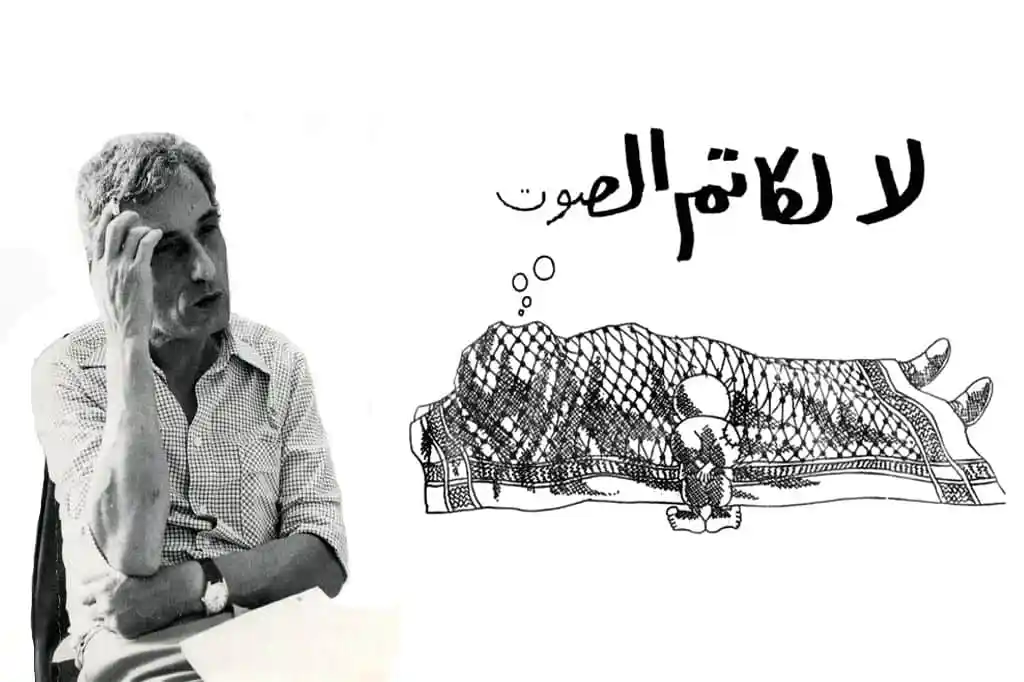
The Kufiya: Inspiring Artists
The kufiya has become a powerful motif in Palestinian art, deeply intertwined with themes of identity, resistance, and cultural heritage. Renowned Palestinian cartoonist Naji Al-Ali immortalized the kufiya through his iconic character Handala, a young refugee who always wears the kufiya as a symbol of the Palestinian people’s enduring struggle for justice and identity. Al-Ali’s work uses the kufiya to highlight the resilience and plight of Palestinian refugees, making it a central element of his political commentary.
Similarly, the celebrated painter Sliman Mansour frequently incorporates the kufiya into his art, portraying Palestinian figures adorned with this emblem of resistance. Mansour’s paintings connect the viewer to the land and the ongoing fight for freedom, with the kufiya serving as a poignant reminder of the Palestinian people’s unwavering spirit.
Additionally, Ismail Shammout name shinned in Palestinian art profoundly captures the Palestinian experience, blending cultural symbols with powerful narratives of loss and resilience. His iconic works, like Where to..?, vividly depict the trauma of displacement, using striking imagery that resonates deeply with the Palestinian people.
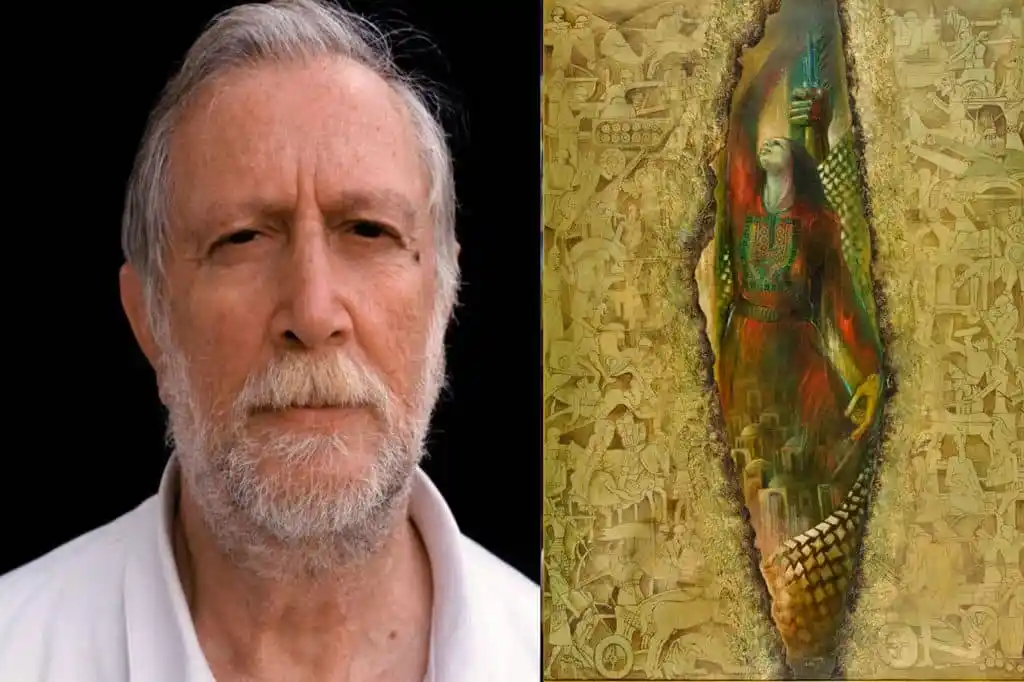
Shammout’s commitment to portraying the struggle for identity and survival aligns with the symbolism of the kufiya, making his art an essential part of the broader narrative of resistance and cultural preservation that the kufiya embodies. Beyond traditional art forms, the kufiya has found its place in contemporary street art and murals, both in Palestine and around the world. Artists use the kufiya in public spaces to express solidarity with the Palestinian cause, often pairing it with powerful imagery of resistance, thereby raising awareness and sparking dialogue about the ongoing struggle.
Internationally, the kufiya has transcended its Palestinian roots to become a universal symbol of resistance against oppression. In global solidarity movements, the kufiya is embraced by artists and activists from various disciplines, including musicians and fashion designers, who wear it as a statement of support for marginalized communities. This widespread adoption of the kufiya in international art reflects a growing awareness of social justice issues and the interconnected struggles for liberation worldwide. If you seek a deeper look at the international art work for Palestine and the integration of the Kufiya, you must have a look at The Palestine Poster Project Archives, where you will find many artistic designs through the history of the revolution.
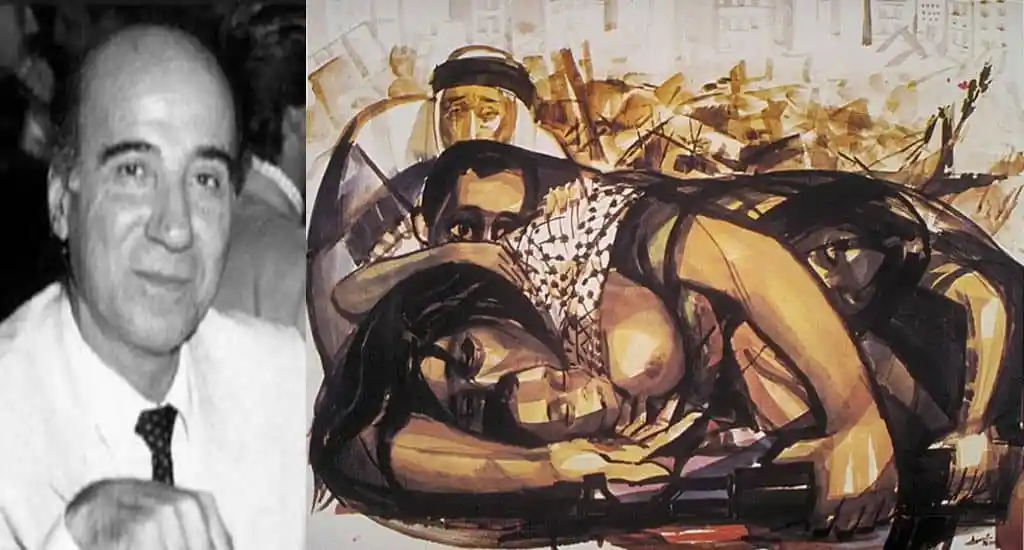
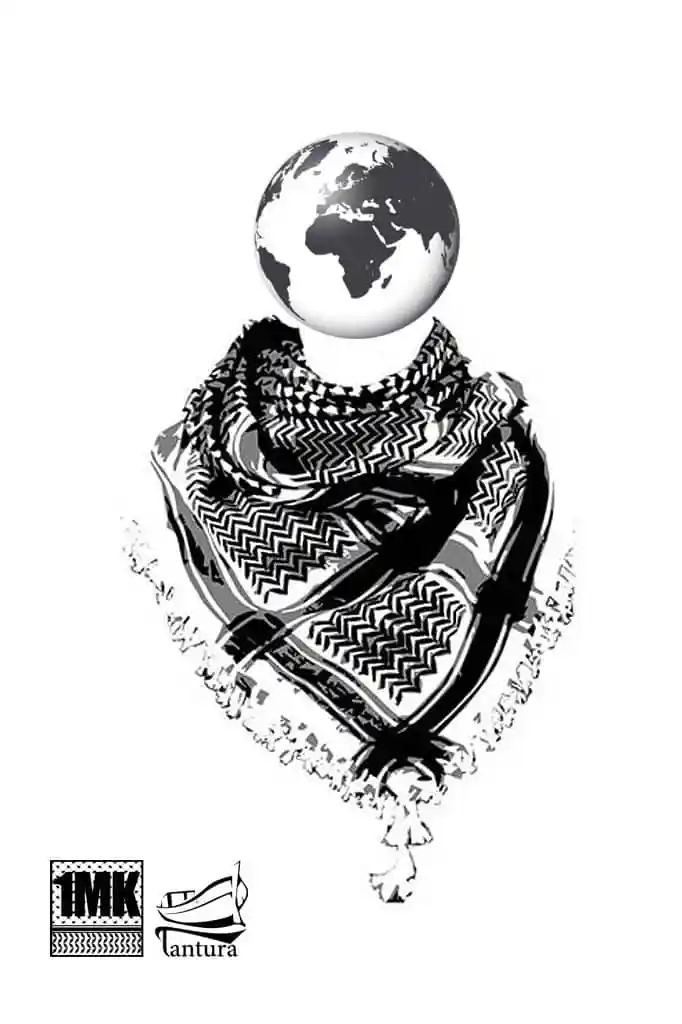
Last but not least, The kufiya is far more than a piece of fabric; it is a powerful symbol of heritage, resistance, and unity that carries the weight of Palestinian history and the struggle for justice. Through the One Million Kufiya project, our mission is to spread awareness and knowledge about the deep cultural significance of the kufiya, ensuring that this emblem of identity continues to inspire and unite people around the world.
By choosing to purchase kufiyas from ethical sources (there are many, research your choices) that are directly linked to the cause, you are not only honoring this symbol but also actively supporting the Palestinian people in their fight for freedom and dignity. It is very disappointing to see the Kufiya being exploit for profit without contributing to the very cause it represents, or even purchased from multinational platforms that are directly or indirectly supporting oppression in Palestine.
Your support makes a difference, and your decisions as a consumer can make a change, study and collect the knowledge you need before you do it! -each kufiya you purchase from the One Million Kufiya project helps preserve this powerful symbol and ensures that its legacy continues to be a beacon of hope and solidarity.
